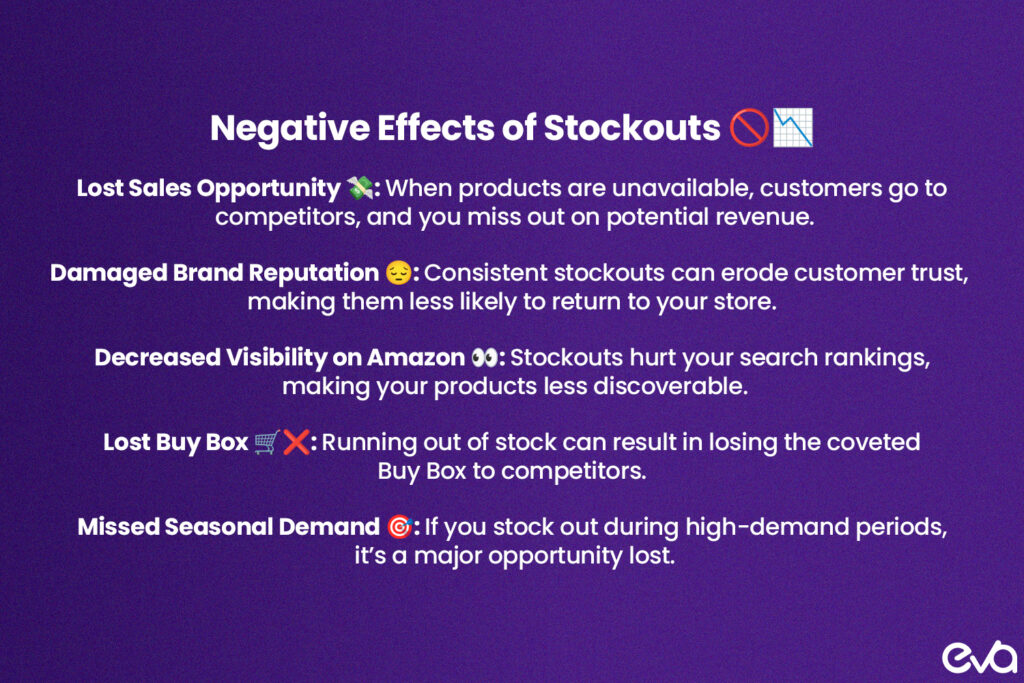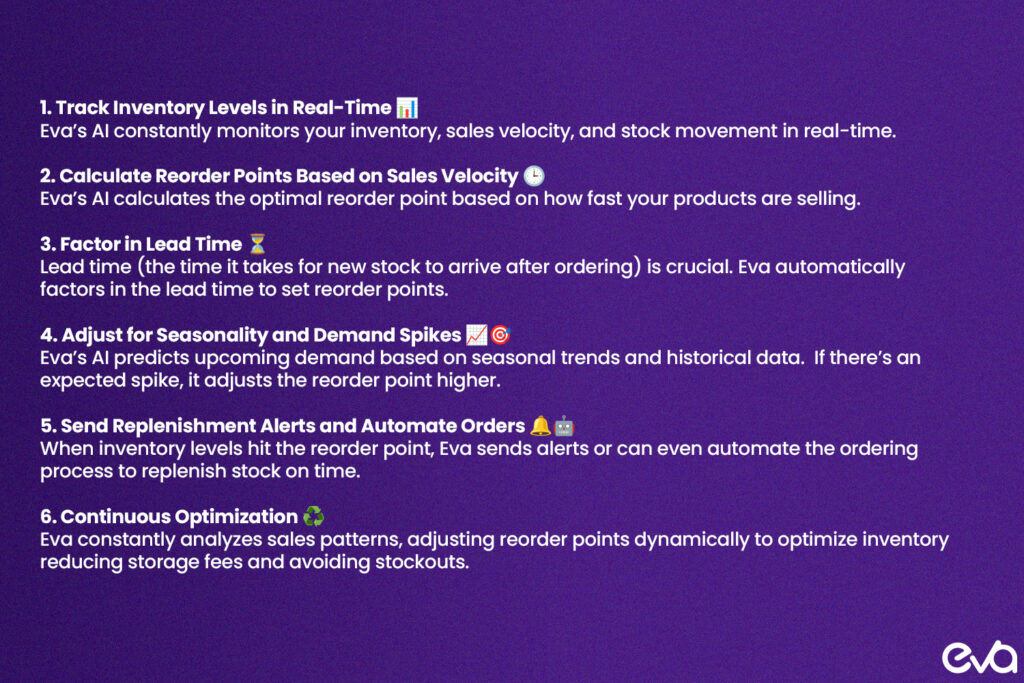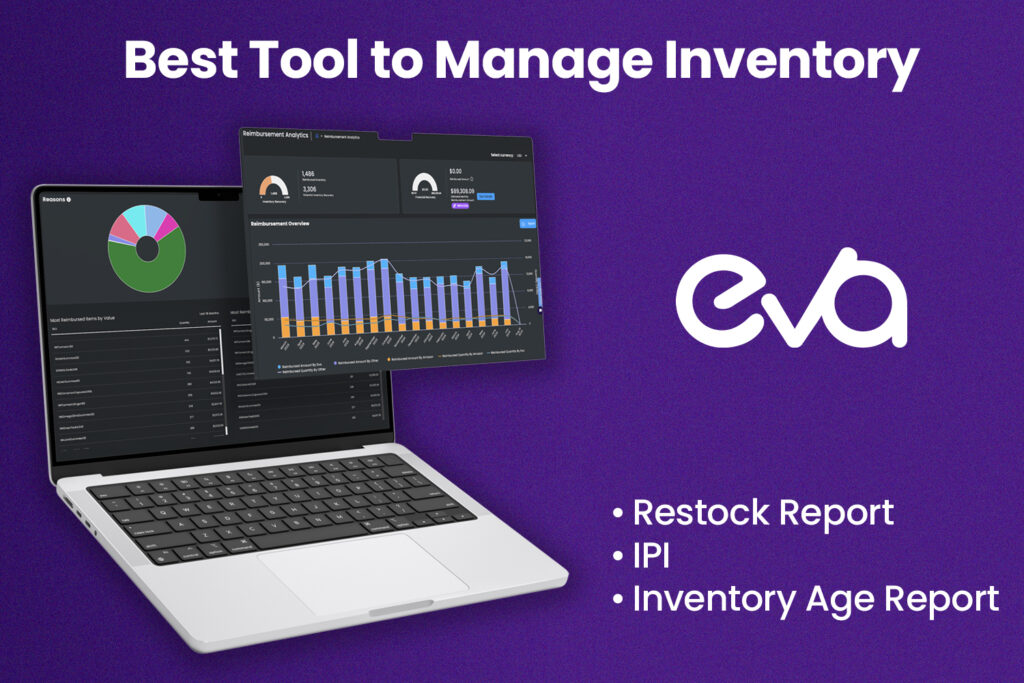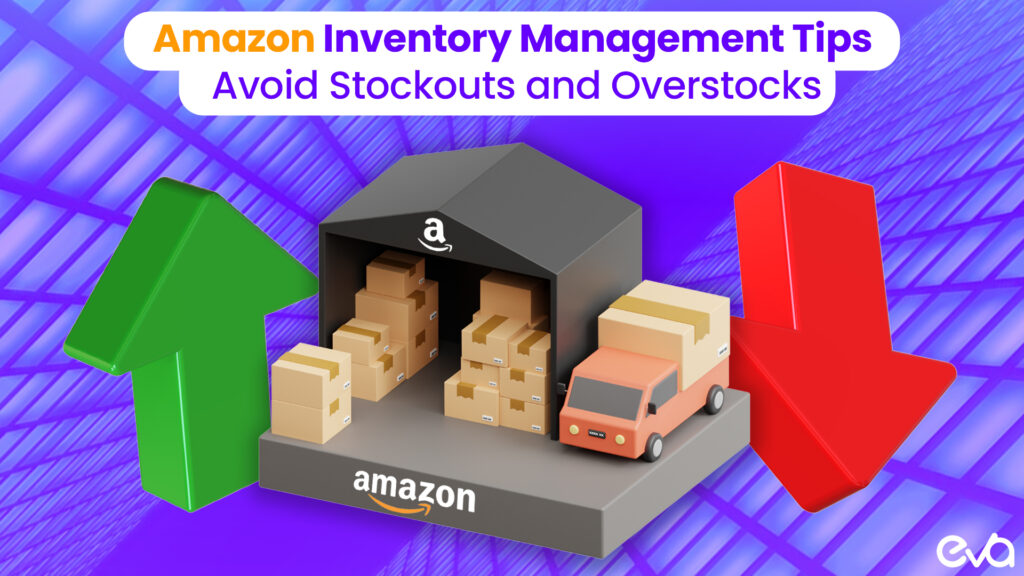Table of Contents
- Introduction
- The Importance of Effective Inventory Management on Amazon
- Common Challenges in Amazon Inventory Management
- Understanding Stockouts and Overstocks
- The Impact of Stockouts and Overstocks on Your Amazon Business
- Best Practices for Avoiding Stockouts on Amazon
- Expert Tips for Managing Inventory Levels on Amazon
- Tools and Software for Amazon Inventory Management
- Successful Amazon Inventory Management
- Conclusion
- FAQs
Introduction
As an Amazon seller, effective inventory management is crucial for the success of your business. It involves carefully balancing your stock levels to meet customer demand while minimizing the risk of stockouts or overstocks.
However, with the right strategies and tools, this can be a manageable task. Proper inventory management ensures that your products are always available for purchase, enhancing customer satisfaction and maximizing your sales potential, while relieving you from the burden of constant inventory monitoring.
The Importance of Effective Inventory Management on Amazon
Effective inventory management on Amazon is a game-changer for your business. It not only helps you avoid stockouts, which can lead to lost sales and disappointed customers but also prevents overstocks, which can tie up valuable capital and increase storage costs.
Maintaining optimal inventory levels can improve cash flow, reduce carrying costs, and enhance operational efficiency.
Common Challenges in Amazon Inventory Management
Managing Amazon’s inventory can be daunting, especially for growing businesses. Some common challenges include:
- Forecasting demand accurately
- Accounting for lead times and supplier reliability
- Managing multiple product lines and variations
- Integrating inventory data across various sales channels
- Adapting to seasonal fluctuations and market trends
Understanding Stockouts and Overstocks
Stockouts occur when you run out of inventory for a particular product, resulting in lost sales opportunities and potential customer dissatisfaction.
On the other hand, overstocks happen when you have excess inventory, tying up valuable capital and increasing storage costs.

The Impact of Stockouts and Overstocks on Your Amazon Business
Stockouts and overstocks can have significant consequences for your Amazon business, including lost sales and revenue, decreased customer satisfaction, and potentially harmful reviews.
Overstocks can lead to increased storage costs, potential for inventory obsolescence, and reduced cash flow.
Understanding these consequences underscores the importance of effective inventory management.
Stockouts:
- Lost sales and revenue
- Decreased customer satisfaction and potential negative reviews
- Reduced search visibility and rankings on Amazon
- Potential loss of the Buy Box and increased competition
Overstocks:
- Increased storage costs and carrying expenses
- Potential for inventory obsolescence and write-offs
- Reduced cash flow and working capital
- Increased risk of product damage or expiration
Best Practices for Avoiding Stockouts on Amazon
To minimize the risk of stockouts, consider the following best practices:
Implement Accurate Demand Forecasting: To accurately forecast demand, utilize data analytics and historical sales patterns. Consider factors such as seasonality, promotions, and market trends.

Maintain Safety Stock Levels: Establish appropriate safety stock levels to buffer against unexpected spikes in demand or supply chain disruptions.
Optimize Reorder Points and Quantities: Set reorder points and quantities based on lead times, demand forecasts, and safety stock levels to ensure timely replenishment.
Monitor Inventory Levels Closely: Review inventory levels regularly, adjust forecasts, and reorder points as needed.
Leverage Amazon’s Inventory Management Tools: Utilize Amazon’s tools, such as Inventory Management Reports and Restock Inventory Recommendations, to gain insights and optimize your inventory levels.
Expert Tips for Managing Inventory Levels on Amazon
To effectively manage your inventory levels on Amazon, consider the following expert tips:
- Implement an Inventory Management System: Invest in a robust inventory management system that integrates with Amazon and provides real-time visibility into your stock levels, sales, and forecasts.
- Utilize Inventory Replenishment Strategies: Explore replenishment strategies such as vendor-managed inventory (VMI), just-in-time (JIT) delivery, or drop shipping to optimize inventory levels and reduce carrying costs.
- Leverage Amazon’s Fulfillment Services: Consider using Amazon’s Fulfillment by Amazon (FBA) service, which can help streamline your inventory management and provide access to advanced tools and reports.
- Optimize Product Bundling and Kitting: Explore product bundling and kitting opportunities to manage inventory levels better and meet customer demand.
- Implement Cycle Counting and Inventory Audits: Conduct cycle counts and inventory audits regularly to ensure accurate stock levels and identify potential discrepancies or issues.
- Analyze Slow-Moving and Obsolete Inventory: Identify slow-moving or obsolete inventory and implement strategies to liquidate or repurpose these items to free up capital and storage space.
Tools and Software for Amazon Inventory Management
To simplify and optimize your inventory management processes, consider leveraging the following tools and software:
- Inventory Management Software: Invest in dedicated inventory management software that integrates with Amazon and provides advanced features such as demand forecasting, reorder point calculations, and real-time inventory tracking.
- Barcode Scanning and RFID Technology: Implement barcode scanning or RFID technology to streamline inventory tracking, reduce human errors, and improve operational efficiency.
- Analytics and Reporting Tools: Utilize data analytics and reporting tools to gain insights into sales patterns, inventory levels, and forecasting accuracy.
- Warehouse Management Systems (WMS): If you manage your warehouse, consider implementing a WMS to optimize warehouse operations, inventory tracking, and fulfillment processes.
- Dropshipping and Third-Party Logistics (3PL) Services: Explore dropshipping or 3PL services to outsource inventory management and fulfillment, allowing you to focus on your core business operations.
Successful Amazon Inventory Management
Now, let’s explore two case studies that illustrate the benefits of effective inventory management:
Case Study 1: Outdoor Gear Retailer
An outdoor gear retailer selling on Amazon faced frequent stockouts during peak seasons, leading to lost sales and customer dissatisfaction.
By implementing a robust inventory management system, optimizing safety stock levels, and leveraging Amazon’s FBA service, they were able to reduce stockouts by 85% and increase sales by a significant 30%, demonstrating the potential for increased sales with effective inventory management.
Case Study 2: Home Decor Brand
A home decor brand struggled with overstock and excess carrying costs due to inaccurate demand forecasting.
By implementing cycle counting, analyzing slow-moving inventory, and optimizing product bundling, they were able to reduce overstocks by a substantial 60%, giving them a greater sense of control over their inventory and improving cash flow by 25%.
How Eva Can Help?
Eva Commerce is a leading eCommerce technology company that helps brands achieve profitable growth on Amazon, Walmart, and other major marketplaces.
With our AI-powered platform, brands can optimize inventory management, avoid stockouts and overstocks, and ensure maximum profitability.

Eva’s platform continuously monitors inventory levels, providing real-time data and alerts that help you prevent stockouts before they happen.
By integrating stock levels with your sales trends, Eva ensures you always have the right amount of inventory.
Eva’s AI platform automates the reordering process based on your product’s sales velocity, ensuring timely replenishment without manual intervention.
This eliminates the risk of human error in inventory management and allows for more strategic decision-making.
Eva doesn’t just consider your stock levels—it integrates inventory data with profitability metrics. For example, if a product is low in stock, Eva can shift your advertising spending to focus on high-margin products with adequate inventory.
This helps you maximize profitability without overspending on products that are at risk of stockout.
Eva’s platform integrates inventory management across all major marketplaces, including Amazon, Walmart, and Shopify.
This ensures a seamless inventory strategy across different sales channels, maximizing sales potential without overstocking in any marketplace.
In addition to AI-powered tools, Eva’s team of experts reviews your data and provides actionable insights to optimize your inventory strategy.
Eva offers end-to-end support for your inventory needs, whether you need advice on forecasting, replenishment, or handling overstocked items.
Ready to optimize your inventory management strategy? Speak with our expert now!
Conclusion
Mastering Amazon inventory management is crucial for the long-term success of your business. By implementing the following key strategies, you can minimize stockouts and overstocks, enhance customer satisfaction, and maximize profitability:
- Invest in robust inventory management tools and software.
- Leverage data analytics and accurate demand forecasting
- Optimize reorder points, safety stock levels, and replenishment strategies
- Conduct regular cycle counting and inventory audits.
- Explore product bundling, kitting, and liquidation strategies for slow-moving inventory.
- Leverage Amazon’s fulfillment services and inventory management tools
Remember, effective inventory management is an ongoing process that requires continuous monitoring, adjustment, and optimization.
By staying proactive and embracing best practices, you can navigate the complexities of Amazon inventory management and achieve sustainable growth and profitability.

FAQs
Stockouts occur when you run out of a particular product, leading to lost sales and potential customer dissatisfaction. This can harm your Amazon search rankings, reduce your chances of winning the Buy Box, and increase competition for your product.
Avoid stockouts by implementing demand forecasting, maintaining safety stock, setting accurate reorder points, and using Amazon’s inventory management tools, like Restock Inventory Recommendations, to monitor stock levels.
Overstocking ties up capital in excess inventory, increases storage costs, and raises the risk of product obsolescence or damage. Managing overstock is essential to maintain healthy cash flow and avoid unnecessary carrying costs.
Tools like inventory management software, Amazon’s built-in tools, barcode scanning technology, and warehouse management systems (WMS) can help streamline inventory tracking, demand forecasting, and replenishment.
Effective inventory management reduces storage costs, improves cash flow, and helps maintain optimal stock levels, ensuring that you don’t lose sales due to stockouts or overextend resources on overstocked products.
Safety stock acts as a buffer against unexpected increases in demand or supply chain delays. It ensures that you have enough inventory to meet customer needs, reducing the risk of stockouts.
To optimize reorder points and quantities, consider your product’s lead time, historical demand patterns, and safety stock levels. Automated tools and analytics can assist in determining the most efficient reorder strategy.
Amazon sellers often face challenges like inaccurate demand forecasting, managing multiple product variations, integrating inventory across sales channels, and adapting to seasonal demand fluctuations.
Yes, Amazon’s Fulfillment by Amazon (FBA) service can help manage inventory efficiently by handling storage, shipping, and customer service. FBA also provides advanced reporting tools for better inventory planning.
Eva Commerce’s AI-powered platform optimizes inventory management by automating reordering, providing real-time stock monitoring, and integrating profitability metrics. It helps Amazon sellers avoid stockouts and overstocks while maximizing sales and profitability.








